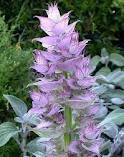The wych elm is the only elm tree which is native to Britain Scotland Loch Leven and Loch Lomond . Loch Lomond is a corruption of the name Leamhán which is Scots Gaelic for elm, as is Leven. In Irish Gaelic the elm is slόibhe. Not to be outdone the Welsh epic poem, The Battle of the Trees, Cad Geddau, supposedly written in the 6th century by the bard Taliesin, features the elm as being steadfast and unyielding in battle. The wood from the wych elm was used by mediaeval Welsh archers to great effect. The English bowmen favoured the wood of the yew tree. However the wood of the elm is flexible which is reflected in the Old English word, wice, meaning pliant or supple which became wiche in Middle English and hence wych.
The wych elm has the largest leaves of all British trees and seems to be more resilient to the ravages of Dutch elm disease, caused by the Ceratocystis ulmi fungus, than other elms. In Britain
The wych elm is associated with death and has been since at least the time of the ancient Greeks. There is a myth which tells how the first elm grove sprang up when Orpheus paused to play a love song on his lyre for his wife Eurydice whom he had just rescued from Hades (the Greek name for the Underworld). Other Greek myths say that Orpheus and his Argonauts met the Hesperides in their garden and the nymphs transformed themselves into trees; Erytheia became a wych elm which in Greek is ptelea. This story can be found in the work of Apollonius Rhodius. Homer relates that nymphs planted trees on the burial mound of the King of Trojan Thebes, King Eetion, after he was slain by Achilles. Virgil says that Oneiroi, the spirit of dreams, slept at night in a wych elm which guarded the entrance to Hades.
Greeks planted the wych elm in burial grounds and regarded it as sacred to Dionysus as it was used to support grape vines; Dionysus was the god of wine and debauchery whose Roman equivalent was Bacchus.
There are other reasons why the wych elm has been associated with death, one being that its branches fall unexpectedly and can kill anyone underneath them at the time. There have been several deaths recorded because of branches falling on them. The wood was also favoured for coffin-making because of its resistance to water.
 In the 17th and 18th centuries in
In the 17th and 18th centuries in  Wych elms can tolerate the most polluted cities as you will see if you visit
Wych elms can tolerate the most polluted cities as you will see if you visit The trees can grow to around 70 feet tall and have broad canopies. They can also live for many years and there are some examples still left in Europe of really ancient wych elms. Yellow dye can be obtained from the tree and the inner bark fibres can be used for tie dying fabrics and for securing thatch as well as for caning traditionally made wooden chairs.
 Pollen from wych elms found in archaeological sites in
Pollen from wych elms found in archaeological sites in The young leaves of the wych elm are edible and can be eaten raw or cooked, but have a mucilaginous texture. The fruit (seed) is also edible; the inner bark has sometimes been dried then ground to a powder and used to thicken soups and stews and added to flour to make bread.
The inner bark of the wych elm has also been used in traditional medicine as a remedy for rheumatism, when used internally as a tisane or externally on the affected area. It has astringent properties and is said to be a useful remedy for diarrhoea. The tisane made from this also has a mildly diuretic action.
Sometimes galls grow on the wych elm leaves as they do on the oak leaves, and the water found in them has been used in traditional medicine as according to the 17th century English herbalist Nicholas Culpeper, “the water that is found in the bladders (galls) on the leaves is very effectual to cleanse the skin and make it fair.” In autumn the insects inside these galls die and the yellow or black balsam that is left has been used for chest ailments.
 In the UK there are some projects designed to help ensure the continued existence of these trees and hopefully soon there will be a cure for Dutch elm disease. These trees need all the help they can get.
In the UK there are some projects designed to help ensure the continued existence of these trees and hopefully soon there will be a cure for Dutch elm disease. These trees need all the help they can get.















































